Transitional TKO: Expert Tips on How to Master This Tricky Design Style
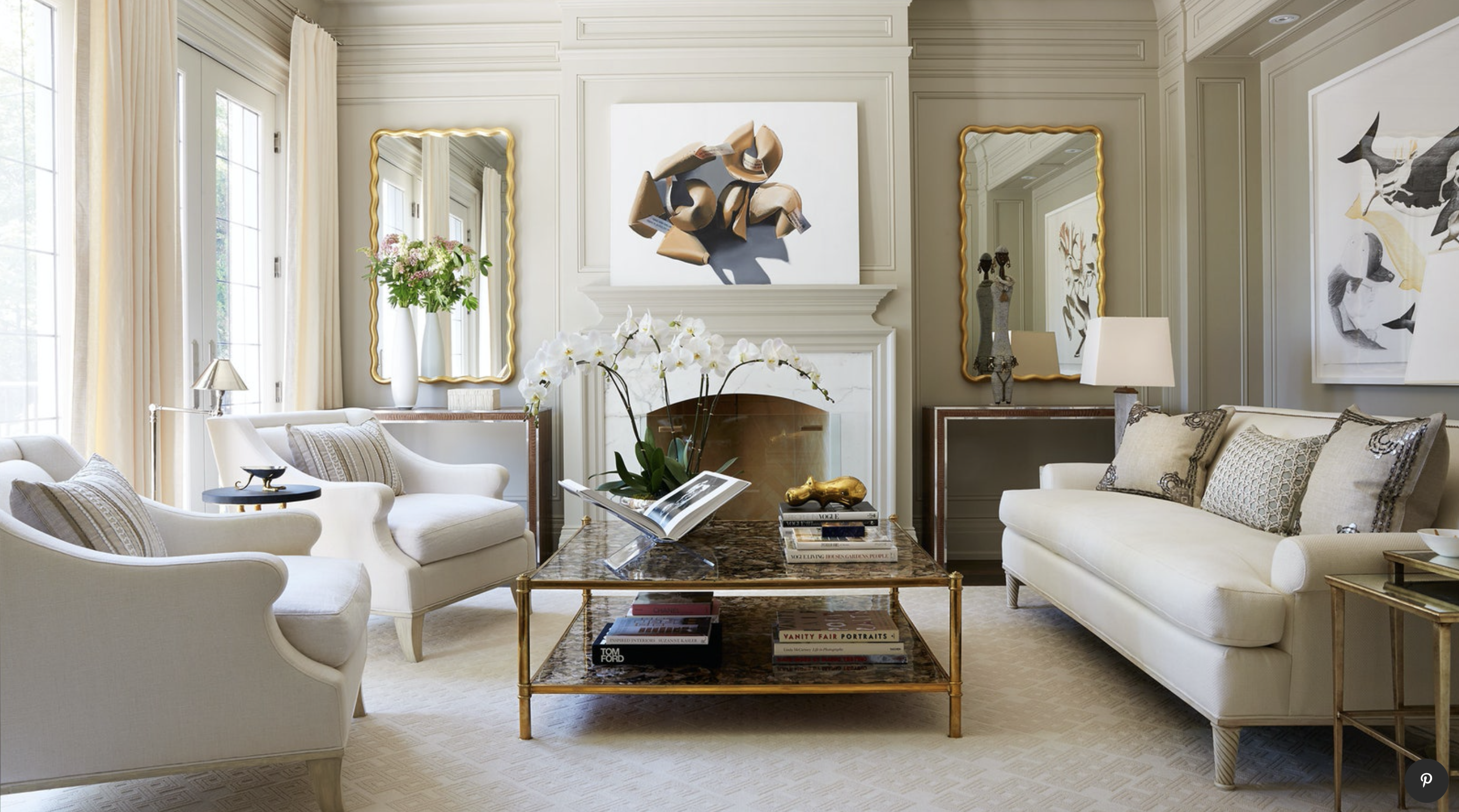
Transitional styles are BACK, baby, and we’re totally digging it! It’s the monkey in the middle of design- a happy medium between Traditional and Modern extremes. If you haven’t heard of this design style before, chances are you’ve still seen it.
Let’s dive in:
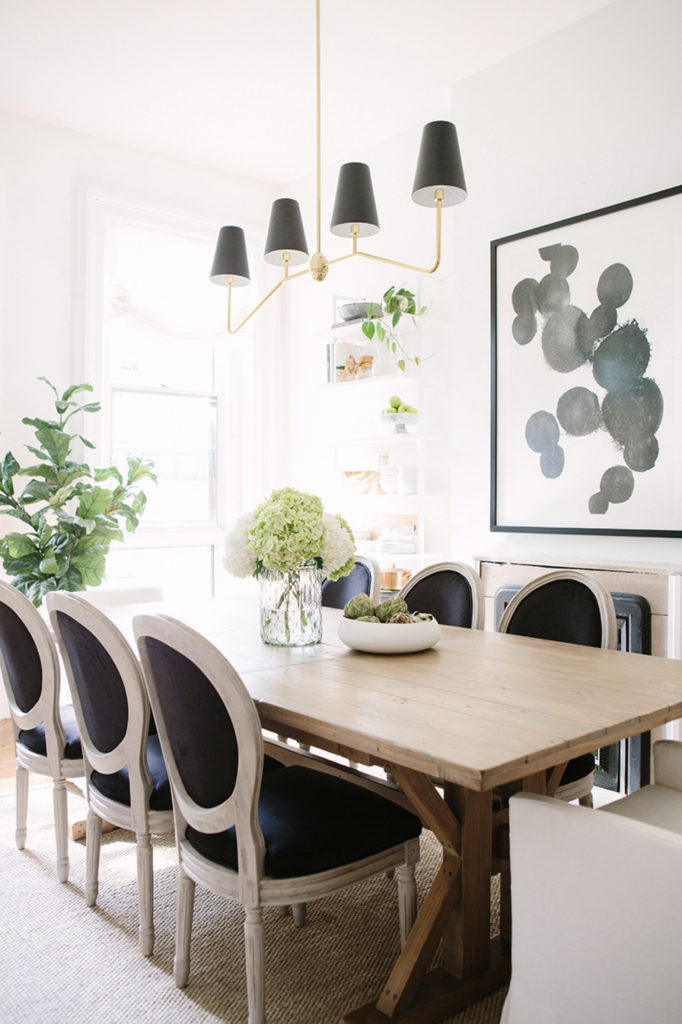 What is Transitional Design?
What is Transitional Design?
The Transitional design style is one of the ‘super’ categories, right alongside Contemporary and Traditional. It’s a literal blend of the two other super categories: if Traditional and Contemporary had a baby, they’d name it Transitional. 👶
What Does Transitional Design Look Like?
Transitional styling mixes the old classics with the current styles to achieve a layered, collected, and timeless effect. Many people don’t realize that they already love Transitional design because their particular ‘style’ went by a different name.
Let’s see if you can recognize yours:
California Coastal, Bohemian, Modern Farmhouse, Industrial, French Contemporary, Scandinavian, and the list could go on.
Quite the broad range of styles, huh? Regardless of which end of the design spectrum you’re shooting for, you’ll still want to know a few of the basic rules you’ll need to apply when creating your own version of a Transitional space.
How Do I Style My Space in the Transitional Style?
Transitional design is the most challenging design style to get right, but don’t worry, we got your back. 😉
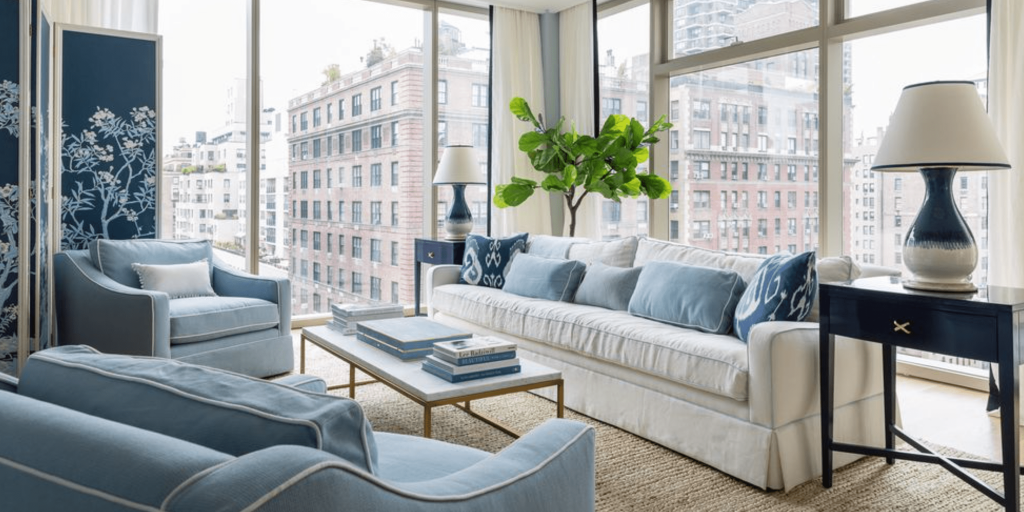
Color/Schemes:
Transitional design colors are typically lighter, softer, and more neutral than Traditional or Contemporary styles. Pops of color, if any, are kept to a minimum. It is imperative to pull your color scheme throughout one form or another to keep the thematic blending effect.
Patterns/Texture: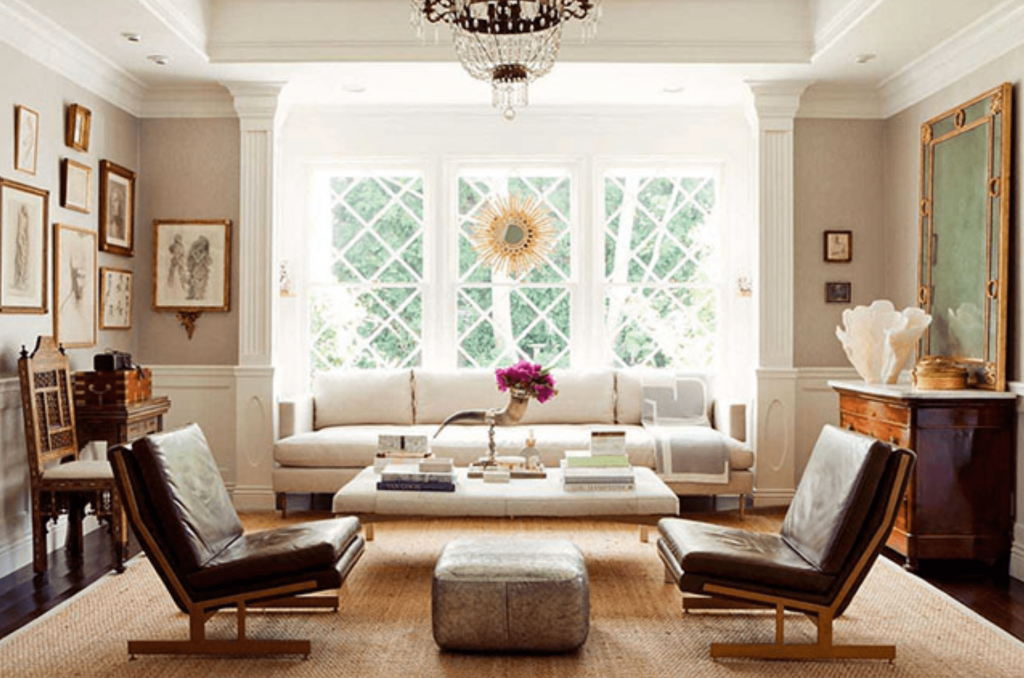
In this style, you won’t need to mess with many patterns; however, you’ll compensate by adding more textural statements and stories for the necessary visual interest. Wood + stone + suede = YES.
Upholstery/Accents:
Comfort is priority numero uno in Transitional design (if only everything in life was like that!) The lines on the furniture stay clean and minimal, while the cushions are plush and cozy. When you accessorize, you will need to restrain yourself a bit- don’t go overboard. Think edit. Is this something stylish and useful? Rugs, blankets, and pillows are good to go. Plants get the green light. (Hey-oh!) 🪴
Form: 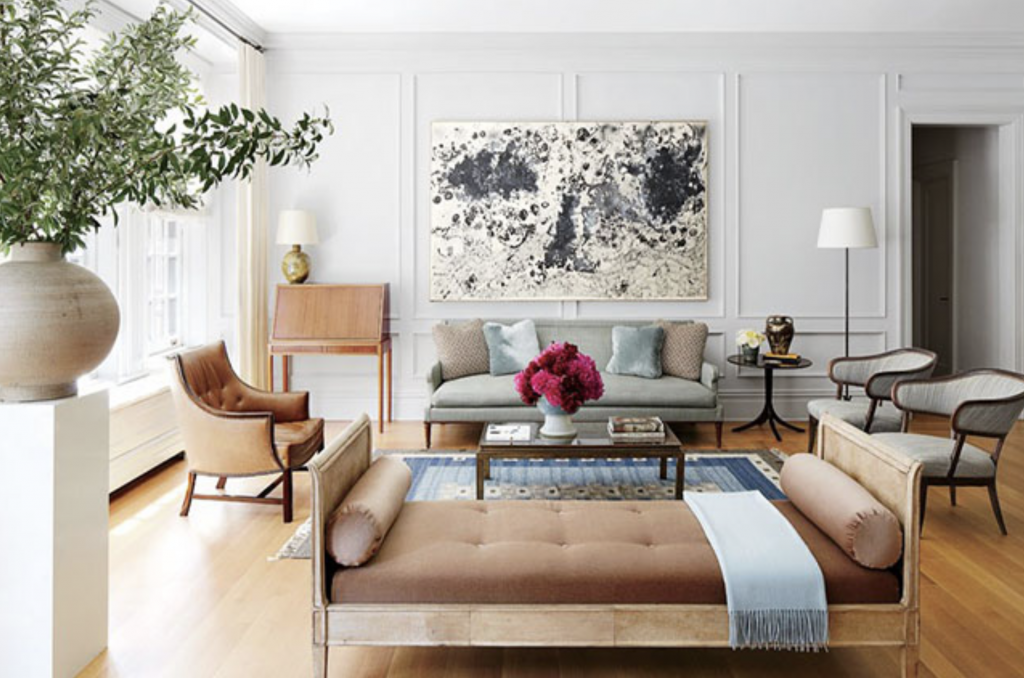
Be mindful of shape and line, and try to keep them in the same family. Furniture legs should all be similar in scale and form. For example, Louis the 16th pieces have neo-classical straight lines. A great Transitional combo for this would be Contemporary pieces with similar lines and forms.
Another way is to keep your shape story the same, such as selecting rounded and curvilinear pieces from a couple of different eras.
A few exceptions to the rules:
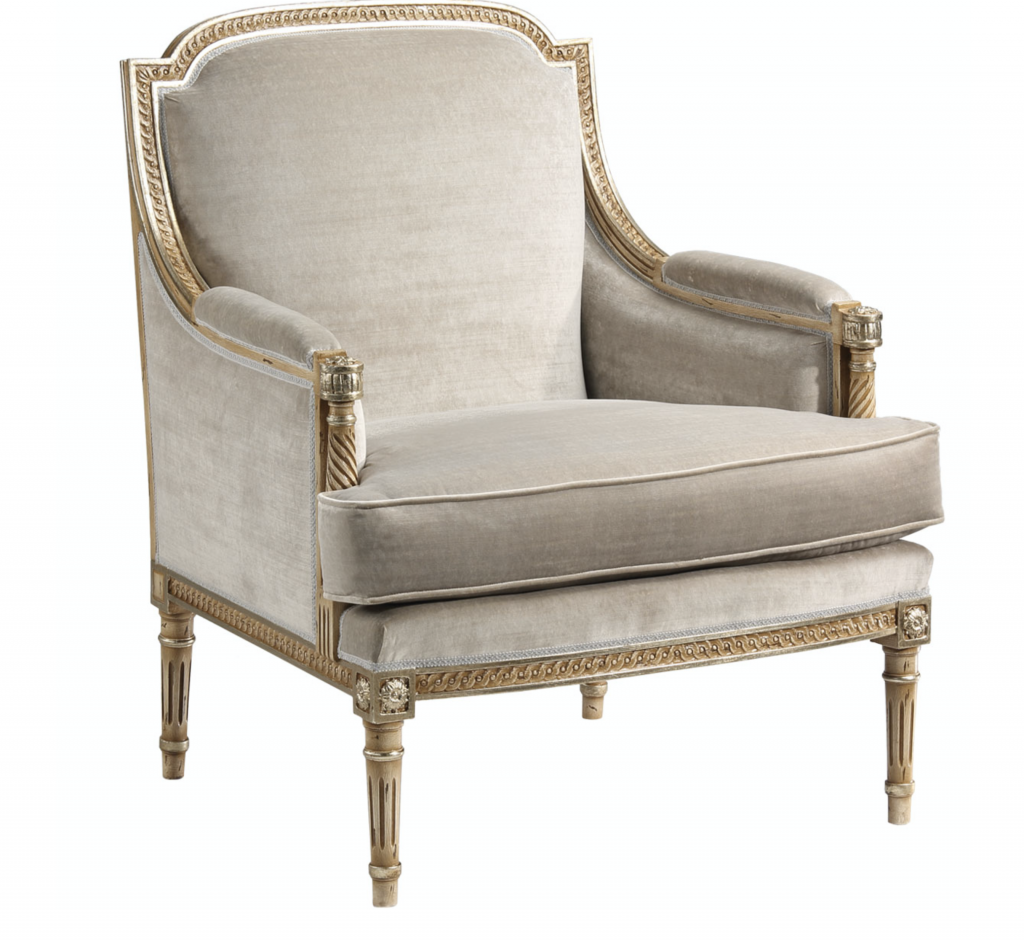 Any of the Louis’ pieces can mix well together, but not necessarily with Chinese antiques. Additionally, Art Deco/Glam/Hollywood Regency work well together but not so great when combined with Victorian or Gothic revival.
Any of the Louis’ pieces can mix well together, but not necessarily with Chinese antiques. Additionally, Art Deco/Glam/Hollywood Regency work well together but not so great when combined with Victorian or Gothic revival.
PRO TIP: Think of your design elements as falling into two sections; those that will act as the defining style statements and those that are the supporting pieces that will form the backdrop. Keep your statement pieces down to 2-3 elements- they can’t all be the star of the show, so you’ll need to pick your Beyoncé’s and your backup dancers. Remember to keep a focal point!
Where Do I Shop for Transitional Style Home Decor?
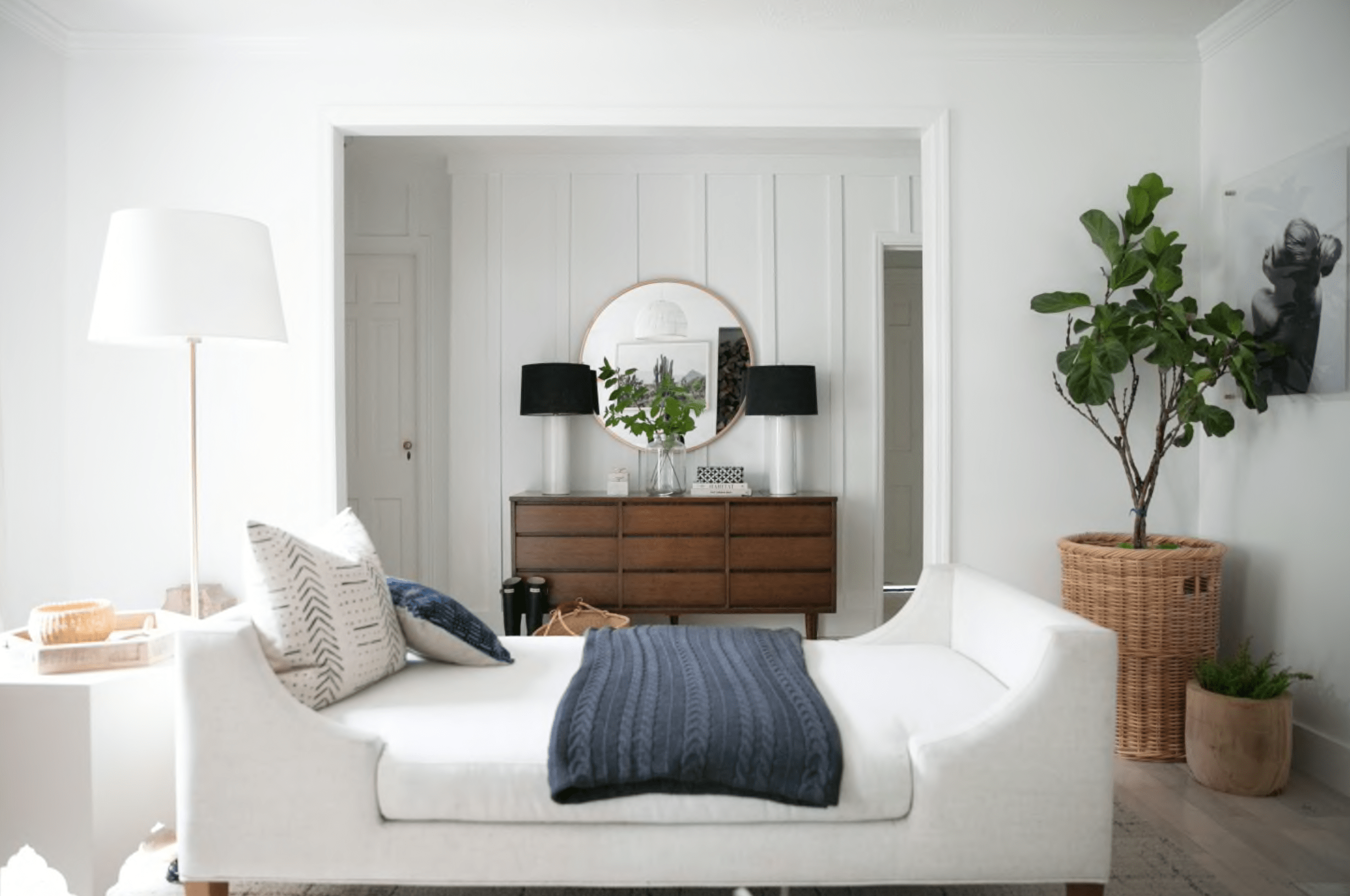
Maybe you’re starting with a piece or two you’ve inherited and love, or perhaps you’re currently sitting on the floor in an empty house. Either way, if you want to find some pieces that have a vintage feel, check out vendors like:
Where To Shop
But to get those support pieces that will help you complete the look, check out places like:
International
Australia:
Want to find out more about Transitional style? Check out our Design Style Spotlight: Transitional for an even deeper dive!







